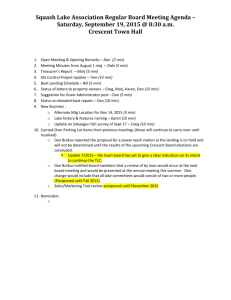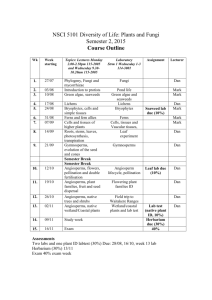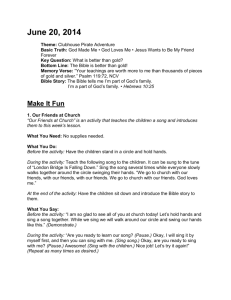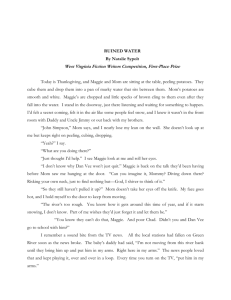Notes from a `Mystery Shopper`
advertisement
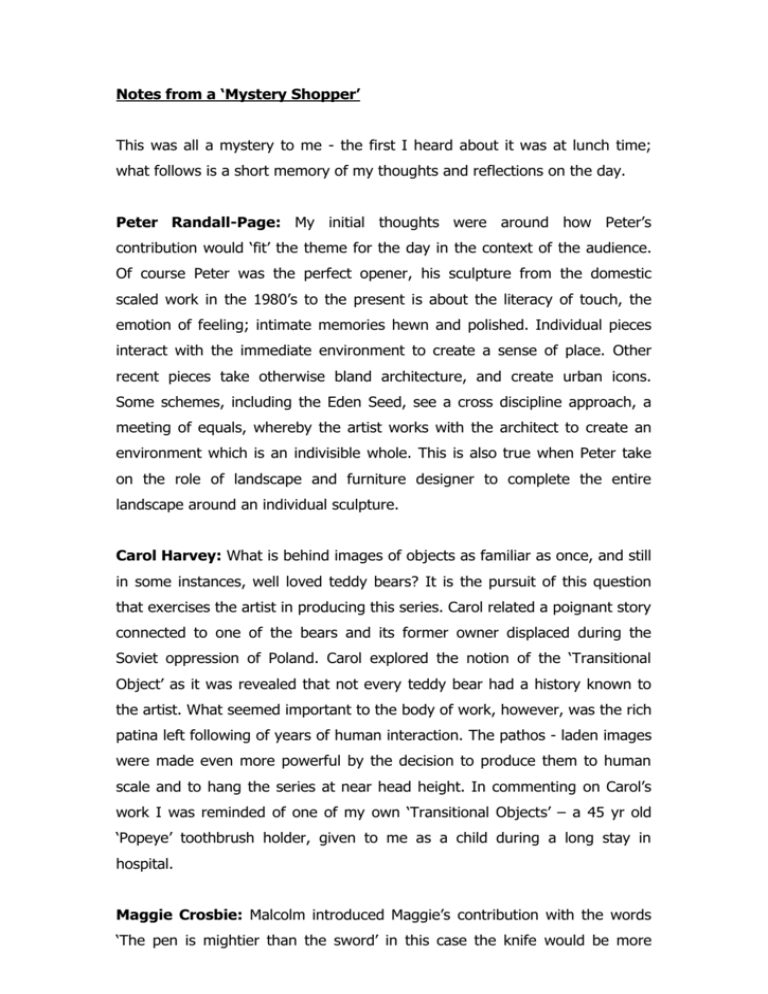
Notes from a ‘Mystery Shopper’ This was all a mystery to me - the first I heard about it was at lunch time; what follows is a short memory of my thoughts and reflections on the day. Peter Randall-Page: My initial thoughts were around how Peter’s contribution would ‘fit’ the theme for the day in the context of the audience. Of course Peter was the perfect opener, his sculpture from the domestic scaled work in the 1980’s to the present is about the literacy of touch, the emotion of feeling; intimate memories hewn and polished. Individual pieces interact with the immediate environment to create a sense of place. Other recent pieces take otherwise bland architecture, and create urban icons. Some schemes, including the Eden Seed, see a cross discipline approach, a meeting of equals, whereby the artist works with the architect to create an environment which is an indivisible whole. This is also true when Peter take on the role of landscape and furniture designer to complete the entire landscape around an individual sculpture. Carol Harvey: What is behind images of objects as familiar as once, and still in some instances, well loved teddy bears? It is the pursuit of this question that exercises the artist in producing this series. Carol related a poignant story connected to one of the bears and its former owner displaced during the Soviet oppression of Poland. Carol explored the notion of the ‘Transitional Object’ as it was revealed that not every teddy bear had a history known to the artist. What seemed important to the body of work, however, was the rich patina left following of years of human interaction. The pathos - laden images were made even more powerful by the decision to produce them to human scale and to hang the series at near head height. In commenting on Carol’s work I was reminded of one of my own ‘Transitional Objects’ – a 45 yr old ‘Popeye’ toothbrush holder, given to me as a child during a long stay in hospital. Maggie Crosbie: Malcolm introduced Maggie’s contribution with the words ‘The pen is mightier than the sword’ in this case the knife would be more precise. As the media tells of the urban world growing more insane every day, with life as cheap as a stolen kitchen knife, Maggie and her team, through ‘Subtext’, help give young people an authentic voice. An outlet and aspiration. Often with an over layer of the language and rhythm of afroAmerican influence, the work to bring out the written and spoken word gives young people the permission to comment on their experience in a direct, inclusive and incisive way. ‘Subtext’ hit the targets of a host of agencies both within and out side of government. As a project and a model the work should be maintained sustained and nurtured. What we learned was the loss of funding. For me this brought home the short term nature of much of the funding cycles, which do not give sufficient time for projects to really show that they work; in this case it should be nothing short of a generation. To invest in this project showed that the Arts Council and others could see the benefits towards creating healthy, safe and sustainable communities. The investment valued young people and encouraged their own sense of worth as they became workshop leaders. As the East of London is transformed (or mangled) into Olympic stadiums and the like, worthwhile projects, starved of funds and unable to compete on a level playing field, seem doomed. We had a real sense, however, that this lady was not about to turn her back on this vital work. For this Maggie truly does earn all of our ‘respect’. John Wright: After a good lunch punctuated by conversations with friends both new and old, accompanied by a sound track of the coolest of jazz, John shared with us the story of Dan. Here the day’s theme of Nature and Nurture took an altogether more personal tone. Under the broader area of racism, John first explored our, as in all of our, reaction and interaction with people who are ‘other’ and apart from ‘us’. John then introduced us to the chaotic inner life of Dan. The nature of Dan’s physical state for me seemed dwarfed by the turmoil that this evoked in his mind. Driven by ‘like to like’ attraction coupled with society’s ability to put people into categories, Dan was not one of the ‘beautiful people’. A state of being proud to be racist fed his tendency to turn on those around him. This was a coping mechanism to deal with his own inner terrorism – against himself. We then heard of his own sense of being ‘other’, both from his disability and his Jewish heritage. To my ear the language seemed to suggest combat for a fair while before we heard of Dan’s moment of tension when asked to spar at the boxing club. For John and client Dan there could be neither a quick fix nor guarantee of a lasting one. The sessions were part of a journey through loss for Dan to accept himself with all his abilities, limitations and contradictions. Martin Whitley: For the last session of the day we ventured out into the Somerset mist and drizzle – nature as a first hand experience. We were introduced to Merlin, an owl of little brain, hand reared from an abandoned chick. Martin and his family had raised the bird, which had then grown to see himself as part of the human family and not as a bird. The story of a human teaching a reluctant bird to fly was amusing – counter nurture? As an adult Merlin displays the use of his innate attribute. His size and weight does not lend itself to long glides and swift attack. Instead he is economical in his hunt, preferring do sit and await his pray, flying to floor it for the shortest possible time. Martin had explained the ratio of sight elements to brain explaining that the restricted space used for the brain, accounted for the lack of innate intelligence. The next birds we met were altogether different. Harris Hawks are the only known social birds of prey. They have evolved to collaborate in their hunt for food. Small eyed and large brained these were swift and agile and capable of long periods on the wing. As the drizzle turned to rain Martin introduced us to the last bird, which was far faster than the owl but lacked the social nature of the Harris hawk and the bond with the falconer. Martin explained the inquisitive nature of the bird and how its lack of ‘homing’ instinct called for the need for a radio device. In a short time we had learnt that innate nature could be masked by the environment and then partially reinstated as in Merlin’s case. The Harris hawks on the other hand had mastered the environment and human ecology around them – who was exploiting whom? The relationship with the third bird was rather more a case of man controlling nature in the raw. Stephen Pettet Smith 20th May 2008 Stephen Pettet Smith (SPS) heads Exeter HealthCare Arts, the arts and environment charity within the Royal Devon & Exeter NHS Trust. Previously Senior Commissions officer for Cardiff Bay, SPS has a background encompassing leading on the arts, craft and design of Britain’s 1992 National Garden Festival and the development of a pioneering sculpture in landscape project in South Wales. Originally he embarked on a career in mechanical engineering within one of Britain’s last independent iron foundries before gaining a first degree in Fine Art and a subsequent post graduate qualification in teaching. The work in South Wales had an emphasis on linking creativity with community development. SPS maintains an interest in this and invests this learning in his work for the Trust. Within the city’s cultural life SPS contributes his experience and time by being chair of trustees for Exeter Arts Council and a steering group member for Phonic FM, the new local radio station. SPS is Vice Chair of Arts & Health South West and a trustee of Paintings in Hospitals.


